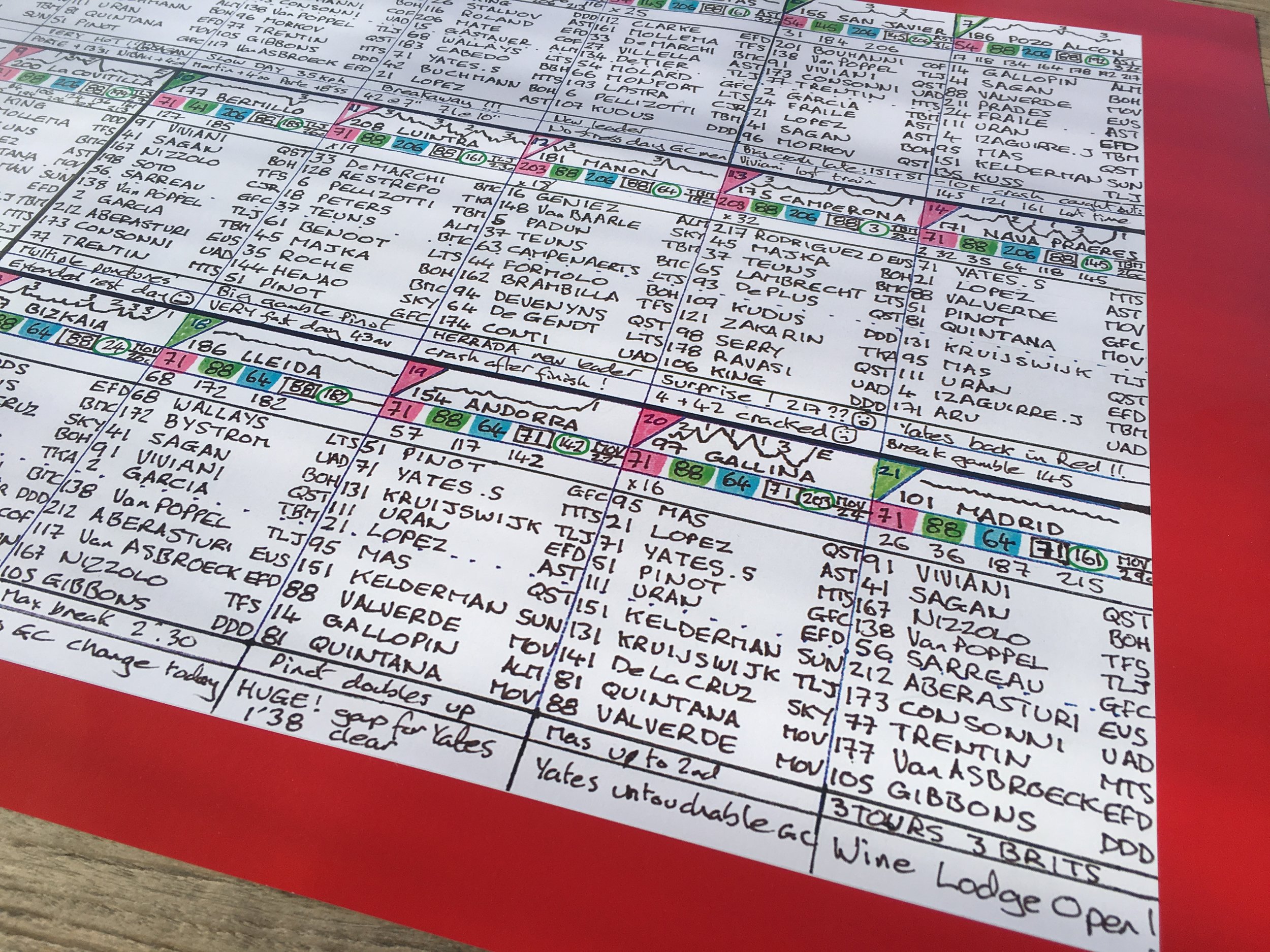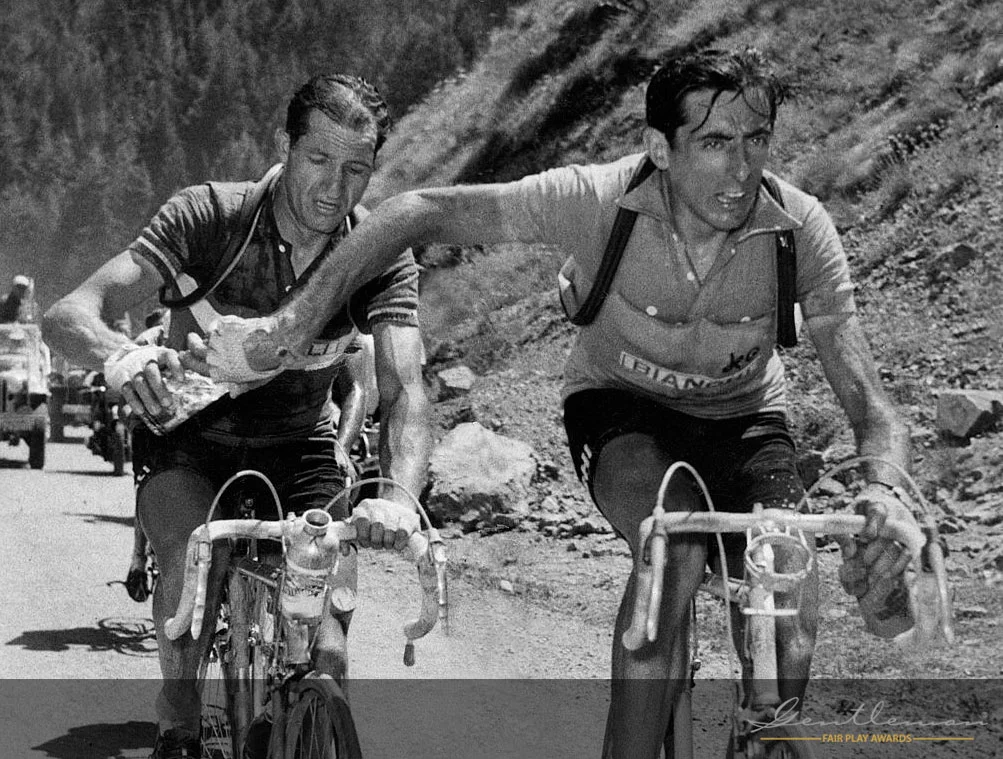"If you’re a tiger you may be a slightly ageing tiger, but you’re still a tiger. The thing is, the stopwatch doesn’t care what age you are. And the power meter doesn’t care what age you are. That speed track doesn’t care what age you are. I want to go and break the world land speed record."
So starts David Street’s inspiring, moving, uncomfortable and revealing documentary on Graeme Obree’s emotional and physically draining journey. Of course, this being Graeme Obree, he doesn’t want to just to break the record. He intends to smash it and from within an extraordinary homemade contraption that will travel ridiculous speeds with its rider’s chin just inches away from the tarmac of a Nevada desert road.
Read MoreThis year’s Vuelta has been one of the most entertaining for years: the red jersey was passed round the peloton like a hot potato in the first few days, some of the uphill finishes have been both fascinating and torturous to watch and we’ve seen the breakaway win through on half a dozen occasions. While the spectators have been enthralled, it’s no secret that there’s been some grumbling from the riders about the tough parcours being set. And with two of the teams taking part, folding at the end of the season, there are some serious questions being asked about the future and sustainability of pro cycling.
Take a look at IAM for instance. The Swiss team was set up in 2013 as a Professional Continental level team and moved up to the world tour in 2015 having raced as a wild card in the 2014 Tour de France. Michael Thétaz, the team’s owner, announced in May that they had failed to secure a sponsor signalling the end of a ‘beautiful adventure.’ Having reached the top flight of the World Tour the only way they could have continued as a team was to take a step down back to Continental level. IAM will no longer exist at the end of this season.
Read MoreTomorrow sees the Tour of Britain set off from Glasgow to Port Douglas on the first of eight stages that cross Scotland, the Lake District, Cheshire, Wales, South West England and a finale on the streets of the Capital on 11th September. No less than eight medalists from Rio’s Olympics are taking part, 21 teams, 11 of which are UCI outfits: this is now a highly rated, prestigious and important race in its own right that attracts some of the best cyclists in the world.
It’s come a long way from its humble origins when, in 1945, a group of disgruntled cyclists who’d been banned by the National Cyclists Union set up the Victory Cycling Marathon to celebrate the end of the war. A stage race from Brighton to Glasgow, it was, by all accounts, a disorganised shambles with riders sleeping in barns and sheds in between stages. That first race was very much a French affair: 6 of the top ten finishers were Frenchmen as was its winner, Robert Batot. But it was also hugely popular with as many as 20,000 spectators watching the race set off.
Read MoreAs La Vuelta a España rolled out yesterday for its 71st edition with a 27.8 km time trial, don’t be fooled into thinking that this Grand Tour is inferior to either the Tour de France or Giro d’Italia. Often relegated to a status as the third best, expect thrills, great bike racing and massive climbs that will test the mettle of the best riders in the world.
Despite being the youngest of the grand tours, La Vuelta is still a ‘Grand Tour’ with a fascinating history and heritage to rival France’s and Italy’s stories of heroism and romance. It’s produced some wonderful bike racing, rivalries and upsets that began 80 years ago and continue into the modern age of professional cycling.
Read MoreEveryone’s heard of Silicon Valley, right: that centre around which the world’s most influential and forward thinking high tech companies congregate, collaborate and compete? Well, Belgium has created its very own ‘Bike Valley’ on the edge of its border with Holland and Germany to emulate America's business hub. When Ride Velo popped over for Eroica Limburg earlier this month, we just had to go there to take a look.
Read MoreWith the Olympic Games in Rio just a couple of weeks away, Team GB's most prolific medal winner, Sir Chris Hoy, predicts an impressive haul of 8-10 golds for our talented road and track cyclists. But Hoy, talking at the News International Building in London last week, revealed that it's four wheels, not two, that are currently the centre of his attention.
Read MoreOn 13th July 1967, on the 13th stage of that year’s Tour de France, the British rider Tommy Simpson was climbing the dreaded Mont Ventoux when he started to veer from side to side of the road. Insisting that he be “put back on my bike” he continued until he was 1.5 km from the summit when he finally collapsed still clipped into his pedals, and died. A mixture of amphetamines and alcohol were later found in his bloodstream causing heat exhaustion and dehydration. Tomorrow will see this year’s tour pass the memorial which marks that spot where the brave Tommy breathed his last gasp and pedalled his final stroke.
Read MoreThis weekend sees 15,000 amateur cyclists from all around the world attempt a stage of the Tour de France when they undertake the L'Etape du Tour. Riders will follow the same route on Sunday that the professionals will be tackling on Stage 20 on 23rd of July from Megeve to Morzine. They will complete 3,300m of climbing on the 146km route and have to conquer the famous Alpine cols of Aravis, Colombier and Joux Plane.
Read MoreToday sees the end of an exciting week of racing at the Tour de France - especially for fans of Mark Cavendish. Cav took three stage wins which makes him the second most successful Tour stage winner of all time, after the legendary Eddy Merckx. Many who had written Cav off as being 'finished' had to eat their words as he used skills learnt on the track to lunge ahead of André Greipel, beating him by millimetres! Ride Velo thought we'd take this opportunity to celebrate the sprint finish by revealing the science, tactics and psychology that goes into achieving the top podium position.
Read MoreThe Tour de France, the most famous bike race in the world, starts this weekend, Saturday 2nd July. If you’re a little rusty on your cycling knowledge and mix up your sticky bottles with your bidon, you may want to brush up on your jargon. Here’s our rough guide to the Tour to see you through the next three weeks; everything you wanted to know about the Tour but were afraid to ask.
Read MoreIf you want to learn more about looking after bicycles you have three options: dismantling your bike in your bedroom, signing up for a City and Guilds or going on a Look Mum No Hands! intermediate cycle maintenance course. Here's a hint - the third option is definitely the path of least resistance. Ride Velo hasn't ever tried options one or two, but three is the safest - and we think it's the most fun too.
Read MoreVintage cycling events have become massively popular in the last few years. The Tweed Run has been going for eight years and tickets for this year's London event sold out in just 30 seconds! The Eroica Britannia festival had its second outing last year and attracted 50,000 guests as well as winning the UK Festival Awards prize for the best non-music festival. This year, 4,500 are set to ride around the glorious Derbyshire countryside on pre 1987 vintage steeds, including Ride Velo and lots of our friends. If, like us, this is your first time, we're here to help you look the part!
Read MoreWhat’s your favourite Grand Tour? Is it the glitz, glamour and massive publicity machine of the Tour de France? Perhaps you prefer the more informal Vuelta? For many a fan, and for many a professional rider, it’s the romance of the Maglia Rosa of the Giro d’Italia, not the Maillot Jaune, which gets the heart beating faster and the hairs to prick up on the back of the neck.
Read MoreWe’ve had the dramatic mountains of the Tour of the Basque Country. Last Sunday saw the Tour of Turkey pedal through that extraordinary meeting point of East and West in Istanbul. I even managed to catch a few km of the Tour of Croatia which looked beautiful and the exotic Tour of Kazakhstan is around the corner. Who else is going to get into the act? Well, today sees the 2nd edition of our very own Tour in God’s own country, the Tour de Yorkshire, from Friday 29th April to Sunday 1st May.
Read MoreHow hard is it to become a bike designer? What gives the geometry of a bicycle a certain beauty and how do you combine functionality with design? An Italian/American product designer has created a wonderful experiment which clearly shows it's much harder than it looks! By inviting 376 people, aged between 3 and 88, to draw a bicycle from memory, Gianluca Gimini has built up an unusual collection of crazy designs. None of them work - but that hasn't stopped the Bologna-based artist from rendering them as if they were production models - and the end result is stunning.
Read MoreLook what fun we had when Foffa Bikes lent us a Plume and a Single Speed for the weekend!
Read MoreIt’s a brisk and chilly March morning but that doesn’t deter Crispin. The cold has never bothered him and he slings on his rucksack over his Sustrans T-shirt, pauses to wipe a smear from his John Lennon glasses and mounts the faithful Brompton. Crispin loves the fact that his company vehicle is a Brompton and he’s adorned it with various cycling stickers like ‘Cycologist’, ‘Burn Fat, Not Oil’, and his favourite, ‘Life Behind Bars’ with a picture of some drop handlebars.
Read MoreRide Velo recently went on a bike maintenance course and learnt the proper way to fix a puncture. However, we haven't had a puncture recently. What did happen, though, was that some nasty person nicked my wheels when my bike was chained up outside... So £200 on Wiggle later, I'd replaced all the stolen bits with nice shiny new ones, and some more for good measure. So, in the spirit of sharing (not stealing), here's how to fix a puncture properly:
Read MoreSunday morning, 5.58 AM and Julian’s awake already. He leans over to the bedside table to turn the alarm off which is due to start blaring at 6. Best not wake up Alissa. Julian sneaks out from under the covers and pads down the landing in his boxers, stifling an expletive as he steps on a piece of lego on the landing floor, then silently curses the detritus of kids’ Games kit and school bags that greets him as he gets down to the hallway of the double fronted Victorian house in Wandsworth. A quick look in the mirror to check his paunch, then he’s in the large open plan kitchen extension. Extra strong pod in the Nespresso machine, Granola and yoghurt, glass of orange juice. He warms his bum on the Aga and pushes the dog’s nose away from his crotch. All the while eyeing up the Pinarello hanging up on the black bull’s horns. He’s had it for 2 weeks now but can’t stop admiring it.
Read More





















































